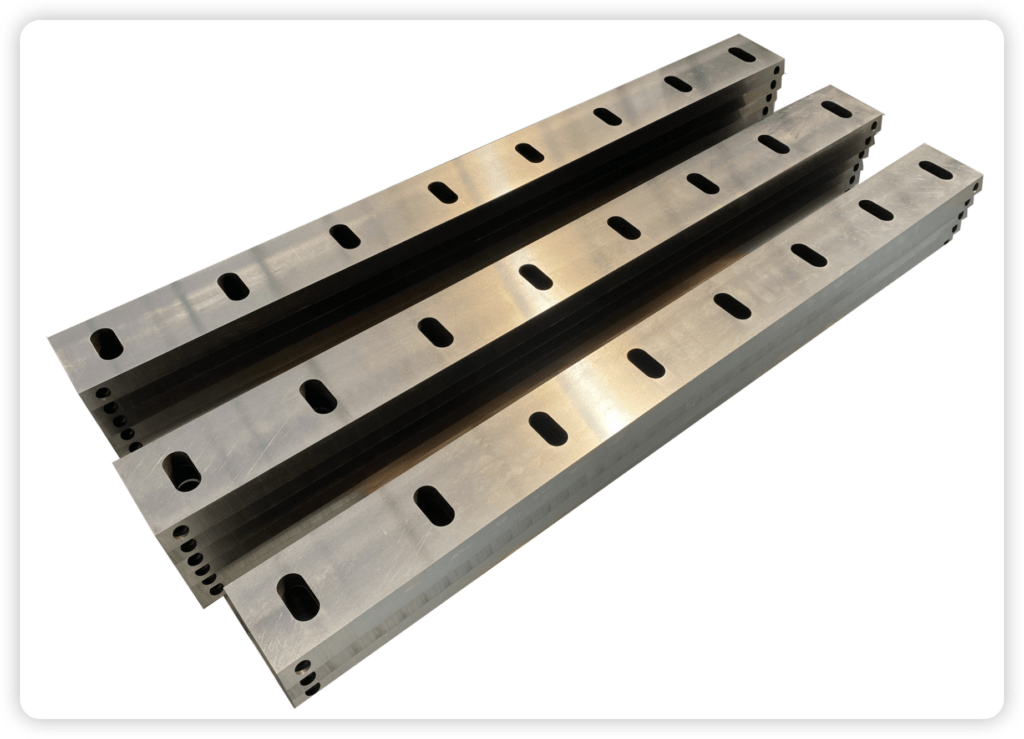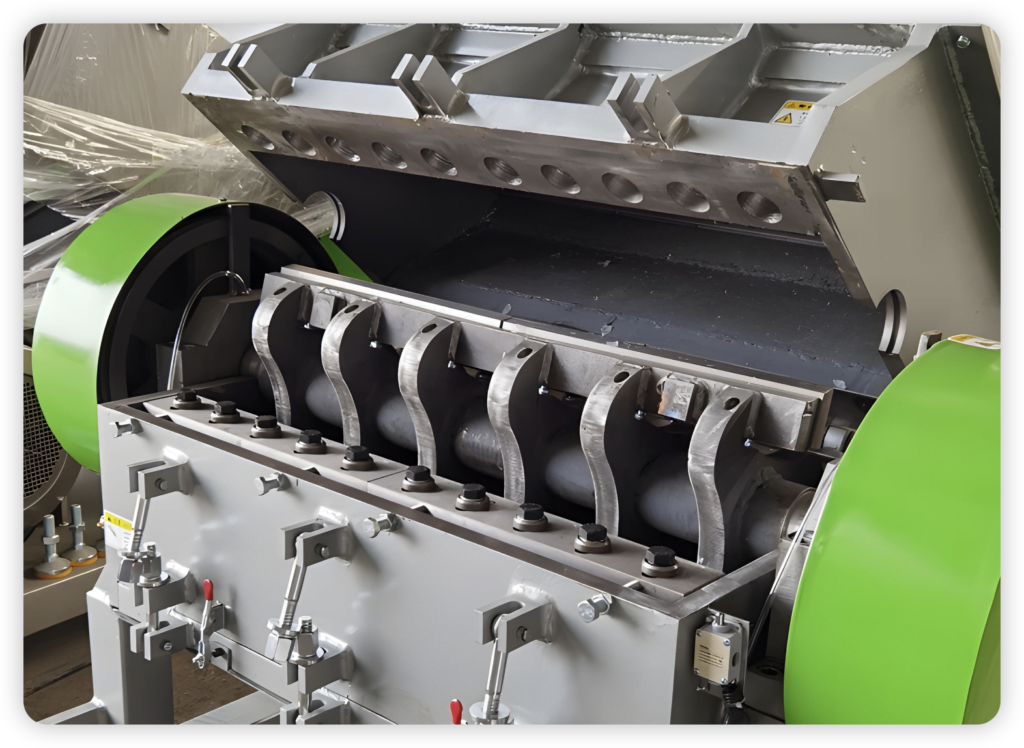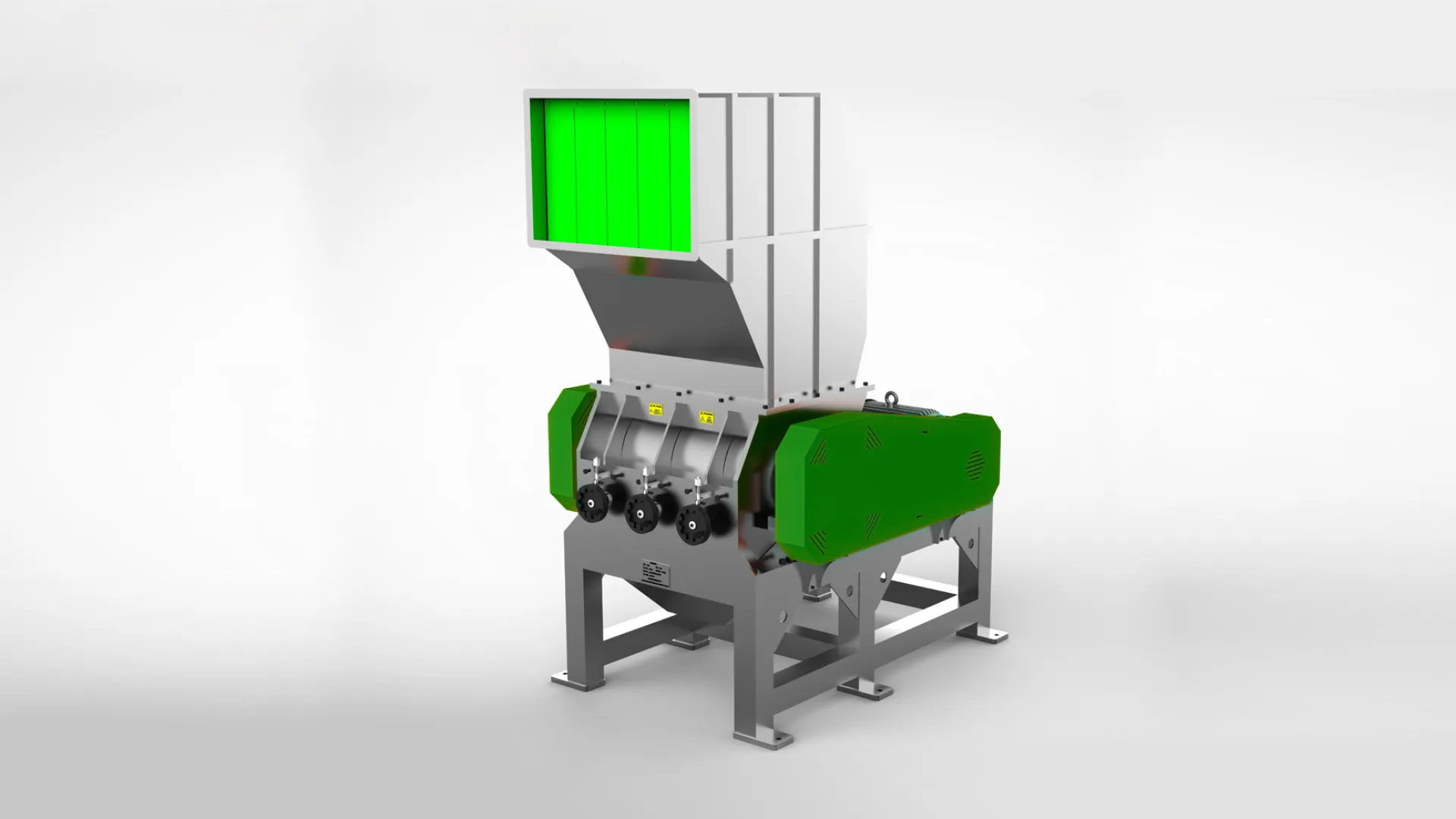Plastic granulators are truly indispensable machines within the plastic recycling ecosystem. They play a pivotal role in transforming various forms of plastic waste – from bottles and containers to larger industrial scraps – into valuable, reusable materials known as “regrinds” or “flakes.” These processed materials can then be reintroduced into manufacturing, significantly reducing the need for virgin plastics and contributing to a more sustainable future. This article offers a comprehensive guide to Granulator de plastic technology, delving into their operational principles, diverse types, the key factors influencing their granulation speed, the specifics of wet granulation, and essential advice on proper usage and maintenance. Our aim is to equip you with a clear understanding of these vital machines.
How Plastic Granulators Work
At their core, Granulator de plastic units operate on a straightforward yet remarkably effective principle. Imagine a set of sharp cutting knives securely mounted on a high-speed rotor, spinning rapidly within a sturdy cutting chamber. This chamber also houses stationary knives. As plastic scrap is fed into the granulator (typically through a hopper), the dynamic interplay between the rotating and stationary knives efficiently shreds, chops, and shears the plastic into progressively smaller pieces. Positioned at the base of the cutting chamber is a precisely sized screen. Once the plastic particles are reduced sufficiently to pass through the screen’s apertures, they are discharged as uniform regrinds or flakes, ready for the next stage of recycling or reprocessing. Larger pieces remain in the chamber, continuing to be cut until they meet the size requirements.
Types of Plastic Granulators
Whilst the fundamental cutting concept is consistent across most Granulator de plastic models, various designs have evolved to cater to specific materials, throughput requirements, and operational conditions. The three primary types you’ll commonly encounter are:
- Double Scissor Cut (or Double Angle Cut): This sophisticated design features rotor and stationary knives that are parallel but angled slightly, creating a true scissor-like cutting action. This precise configuration ensures a consistent cutting gap along the entire length of the knives. The benefits are numerous: reduced heat build-up during operation, minimised power consumption, cleaner and more uniform cuts with fewer fines (dust-like particles), and often lower operational noise.
- Chevron or V-type Rotor: In this popular design, the rotor knives are arranged in a distinctive “V” or chevron pattern. This intelligent configuration continuously draws the plastic material towards the centre of the rotor, even as the knives begin to dull. This makes the V-type rotor particularly effective for efficiently processing thicker or more robust plastic components and hollow items, as it prevents material from ‘riding’ on the knives.
- Helical Rotor (or Staggered Rotor): Featuring knives arranged in a helical or staggered pattern around a closed or semi-closed rotor, this type is engineered for toughness. The staggered cut distributes the cutting force, making it exceptionally robust and well-suited for processing particularly thick, dense, or cross-sectional plastic parts. They are often chosen for applications demanding high throughput of challenging materials.

Factors Affecting Plastic Granulator Speed and Efficiency
Several interconnected factors significantly influence the speed, throughput, and overall efficiency at which a Granulator de plastic can process plastic waste:
- Type of Material: The inherent properties of the plastic being processed are paramount. Softer, more pliable plastics like polyethylene (PE) and polypropylene (PP) are generally easier and quicker to cut. Conversely, tougher, more rigid engineering plastics such as Acrylonitrile Butadiene Styrene (ABS), Nylon (Polyamide – PA), and Polycarbonate (PC) require more cutting force and may process more slowly. Friable plastics might shatter, creating more fines, whilst elastomeric materials can be challenging to grip and cut cleanly.
- Size and Design of Cutting Chamber & Knives: A larger cutting chamber can accommodate a greater volume of plastic at any given time. Similarly, longer knives offer a larger cutting surface. The overall geometry of the chamber and knife placement also plays a critical role in how material flows and is presented to the cutting edges.
- Quality and Material of Knives: This cannot be overstated. High-quality knives, typically crafted from durable, wear-resistant tool steels like D2 / SKD11, are absolutely essential for efficient, consistent cutting and extended operational life. Sharp, well-maintained knives require less energy and produce better quality regrind.
- Quantity of Knives (Rotor and Stator): Generally, an increased number of knives (both on the rotor and stationary bed knives) translates to more cuts per revolution, leading to faster granulation and potentially finer regrind. However, the optimal number is specific to the Granulator de plastic design and the material being processed; too many knives can sometimes lead to blockages with certain materials.
- Electric Motor Power: A more powerful electric motor provides greater torque, enabling the rotor to spin faster and maintain its speed even under heavy load. This directly impacts the cutting action and the machine’s ability to handle tougher materials or higher feed rates.
- Screen Size (Aperture Diameter): The size of the holes in the discharge screen dictates the final size of the regrind. Smaller screen holes produce finer regrinds, which might be necessary for specific applications, but this also means the material stays in the cutting chamber longer, reducing overall throughput. Conversely, larger screen holes allow for faster processing but result in coarser particles.

Wet Plastic Granulators
Wet Granulator de plastic models, as the name suggests, integrate a system for introducing water directly into the cutting chamber during operation, typically via strategically placed water jets or hoses. This seemingly simple addition offers several significant advantages:
- Partial Cleaning: The flowing water helps to wash away surface contaminants, such as dirt, grit, and paper labels, from the plastic as it’s being reduced in size. This can be particularly beneficial as a pre-cleaning step in a larger washing line.
- Lubrication and Cooling: Water acts as an effective lubricant between the cutting edges of the knives, reducing friction. This, in turn, minimises heat build-up within the cutting chamber, which is crucial when processing heat-sensitive plastics that might otherwise melt or degrade.
- Reduced Knife Wear and Dust Suppression: The combination of lubrication and cooling significantly reduces the rate of wear on the knives, extending their operational lifespan and reducing maintenance frequency. Additionally, the water helps to suppress airborne dust particles, creating a cleaner and safer working environment.
Due to these benefits, wet Granulator de plastic units are commonly employed in integrated plastic film and rigid plastic washing lines, where cleaning and size reduction occur concurrently.
Proper Plastic Granulator Usage: Best Practices for Safety and Efficiency
To ensure the safe, efficient, and long-lasting operation of your Granulator de plastic, adhering to best practices is essential. Consider these key guidelines:
- Pre-Operation Checks: Always ensure the cutting chamber is empty before starting the granulator. Turn the granulator on *before* introducing any plastic material, allowing it to reach full speed.
- Controlled Feeding: Feed material at a steady rate. Avoid overloading or “choke feeding.” For very large or bulky items, a shredder may be a better initial step. Avoid feeding lumps or purgings that exceed the machine’s capacity.
- Vigilance During Operation: Keep all foreign objects (especially metals and stones) away from the infeed. Regularly empty the regrind collection bin to prevent system backup.
- System Shutdown: If using a blower system, stop the granulator *before* stopping the blower. Purge the granulator by letting it run empty for a short while before turning it off completely.
- General Care: Regularly inspect knives and rotate the screen (if applicable) to extend its life.
Maintenance: Keeping Your Plastic Granulator in Peak Condition
Consistent, proactive maintenance is absolutely crucial for prolonging the operational lifespan of your Granulator de plastic, ensuring optimal performance, and preventing costly, unscheduled downtime and repairs. Key maintenance tasks include:
- Knife Care – The Heart of the Machine: Regularly inspect, sharpen, and rotate both rotor and stationary knives. Maintain the correct knife gap as per manufacturer specifications. Sharp, well-set knives are key to efficiency.
- Prevent Contamination Damage: Diligently keep the cutting chamber free of foreign objects. Consider magnetic separators or pre-sorting if contamination is a recurring issue.
- Screen and Chamber Health: Regularly check and clean the discharge screen to prevent clogging, which can lead to jamming, overheating, and motor burnout.
- Mechanical Integrity: Adhere to the lubrication schedule for the motor and bearings. Check drive belt tension and condition regularly. Periodically inspect all fasteners for tightness.
By diligently understanding and implementing these guidelines on the principles, types, proper usage, and thorough maintenance of Granulator de plastic machinery, you can effectively harness this essential technology to optimise your plastic recycling operations, enhance material value, and contribute to a more circular economy.



